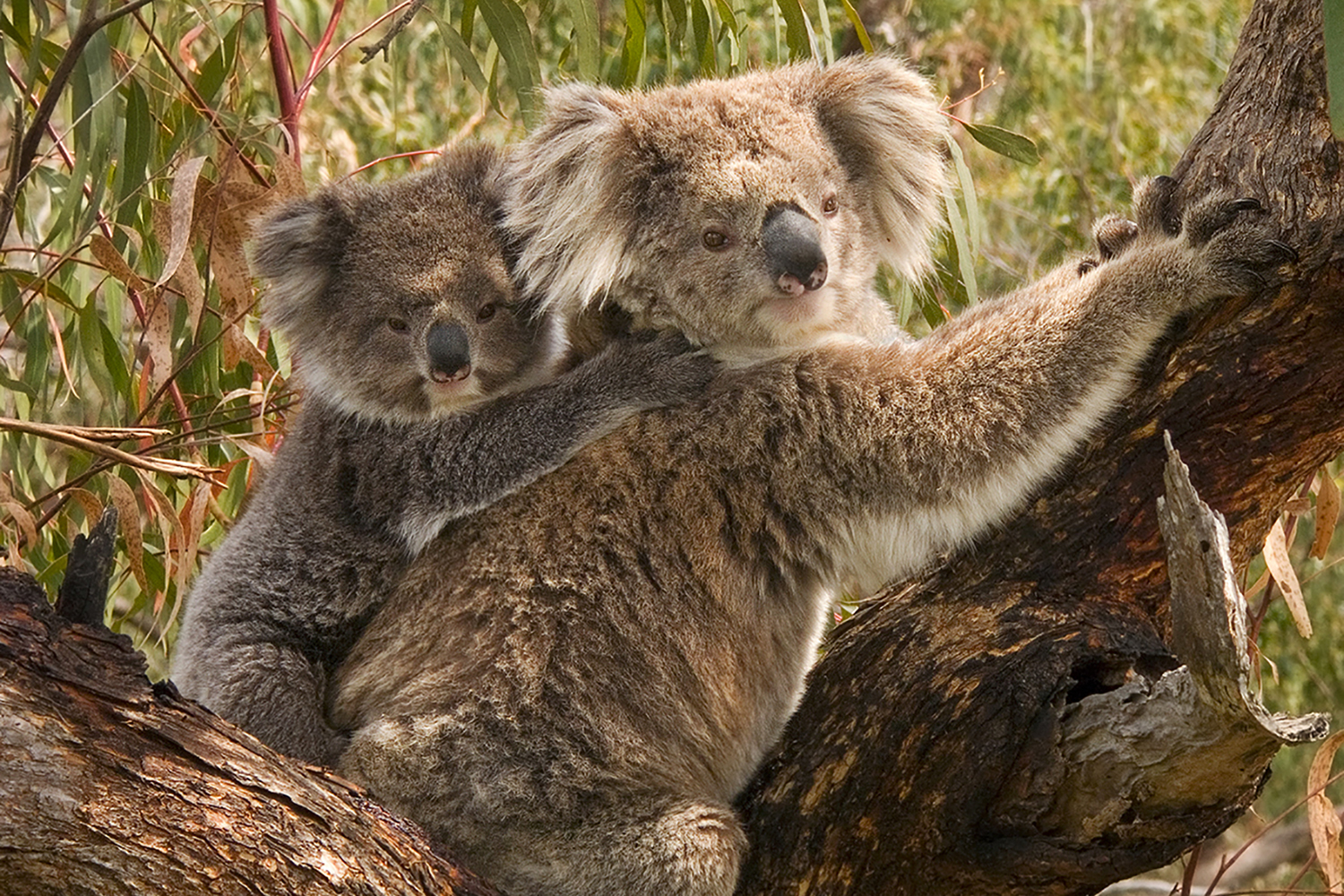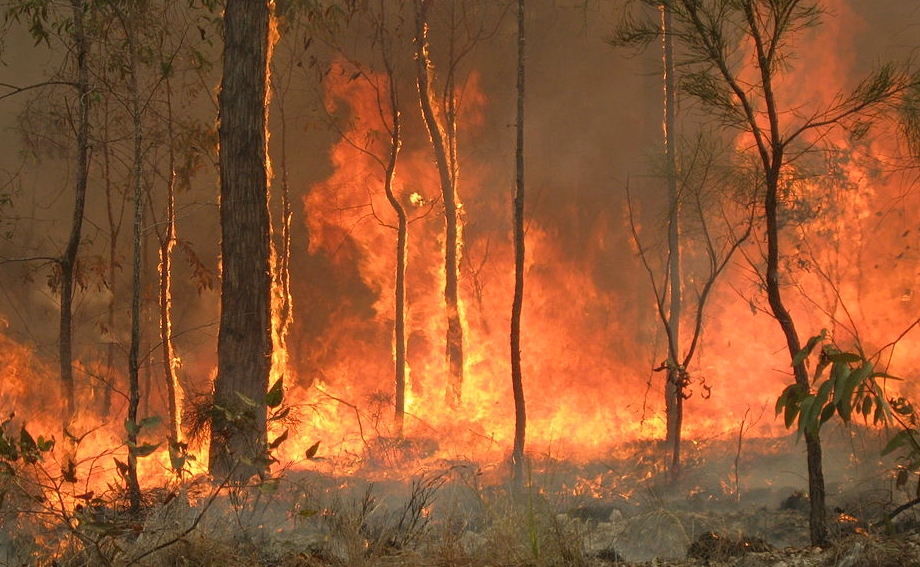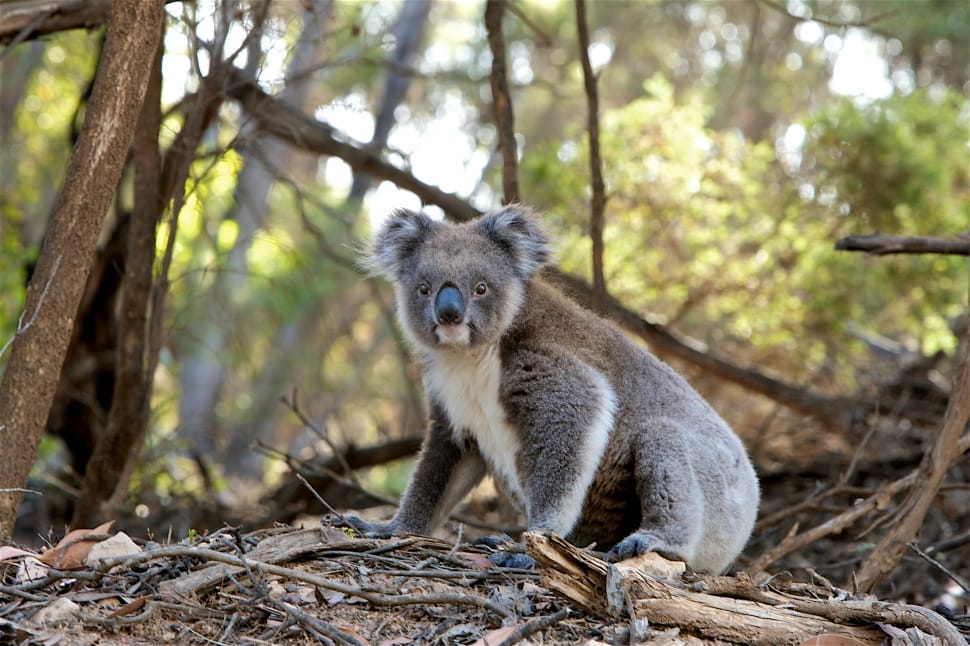During the last austral summer, Australia suffered from a plague of fires aggravated by a prolonged drought, a consequence of global warming brought on by human activity. If these episodes continue to become more frequent, we will bring the koala to the brink of extinction… for the second time since this extraordinary marsupial was discovered by European settlers in the 19th century. But what is the real situation of koalas today? Is there still time to save them?
The evolutionary branch of koalas emerged some 40 million years ago, when Australia was still breaking away from Antarctica and forming a new continent. By the time the first European explorers arrived, these animals had been living alongside humans for 60,000 years. Australia’s first human settlers encountered two species: today’s koalas and a larger, now extinct species. The first “modern” reference dates from 1798; on 26 January, John Price wrote in his diary that he had seen a specimen of what the natives knew as “cullawine”, which was very similar to South American sloths.

The first scientific description came in 1803, when the English expedition from the HMS Investigator captured the first specimens on Mount Kembla. The English naturalist Robert Brown then named it Didelphis Coola, relating it to the wombat, the animal to which it is most closely related. Although in Europe it was associated with bears and monkeys, in 1816 the koala was recognized as a new species of marsupial and received its definitive scientific name, Pharcolarctos cinereus (which means “ash-grey bear with a pouch”).
The first settlers began hunting them for their soft fur and cutting down the forests they inhabited. By the beginning of the 20th century, the demand for their fur was so high that the koala population had already been seriously decimated, and bans were imposed to prevent their mass hunting. The most critical moment came in August 1927, when the ban was lifted in the Queensland region: 800,000 specimens were shot, leaving the koala close to extermination. Fortunately, that did not happen because in 1930 it was declared a protected species.
The fires, more durable, aggressive and frequent
Now the threat to the koala is very different: fires, which are increasingly numerous, aggressive, long-lasting and frequent, as a direct consequence of climate change. This has been confirmed by various scientific studies, such as the most recent one conducted by MIT, which connects global warming with the proliferation of local episodes of extreme heat and drought. This contributes to the formation of fires and feeds them, as the vegetation and soil are so dry that they become instant fuel.

Bush fires are such a problem that the recently ended fire season is estimated to have wiped out 30% of the already diminished population. Koalas are particularly sensitive to fire because they are fully adapted to tree life. They rarely come down to the ground, not even to drink, because they get the water they need from the leaves they eat, and when they do come down their mobility is very limited. Their diet is restricted to the leaves of a few tree species (such as certain varieties of eucalyptus and some corymbias). Many of the features that make the koala so unique —and make it a family of its own within the marsupials—are actually adaptations to life in the trees: like their hands and feet, armed with opposable thumbs. They are the only animal, along with the possum, that is not a primate and has opposable thumbs (which allow it to grip and climb trees much more securely).
In May 2019, before the last fire crisis, the Australian Koala Foundation had already declared the koala as “functionally extinct” —a claim that drew much criticism from experts. To classify a species as functionally extinct, the point of no return is usually set at 500 individuals of reproductive age —which ensures genetic diversity and therefore the viability of the species— and which is concentrated in a habitat with sufficient extension and food to ensure that the population thrives. The 2016 koala census estimated that there were about 300,000 koalas, and although this figure has since dropped significantly, koalas are nowhere near the figure of 500 individuals, which marks the extreme risk of extinction. However, at the current rate of habitat destruction, by 2050 this critical value will have been reached.
Two drastic measures for survival
For the moment, the scientific community believes that there is still hope for this charismatic marsupial, whose future is indeed in danger. “We are cautious about these numbers, but we are not down to hundreds of koalas. We don’t want to undermine the good efforts of people trying to save koalas, but the language is important. We absolutely believe there is hope to stop koalas going extinct,” Stuart Blanch, spokesman for the conservation organisation WWF Australia, told The Guardian at the height of the fires.

Drastic actions are urgently needed to prevent this, and scientists are focusing on two. On the one hand, local action: the reforestation of areas inhabited by koalas, to ensure the success of enough viable populations, and which is combined with an active policy to stop the destruction of forests as a result of massive logging, promoted by the timber industry and by agriculture.
On the other hand, more global action is needed to stop the warming of the planet. Koalas cannot tolerate more than 3 or 4 days of continuous extreme heat, which does occur during increasingly frequent heat waves. The same applies to eucalyptus trees, which are particularly resistant to fire and can revive themselves after a fire under normal conditions. However, they are not able to recover if the intensity is that of the most devastating fires of the last Australian summer.
Miguel Barral
@migbarral
Comments on this publication